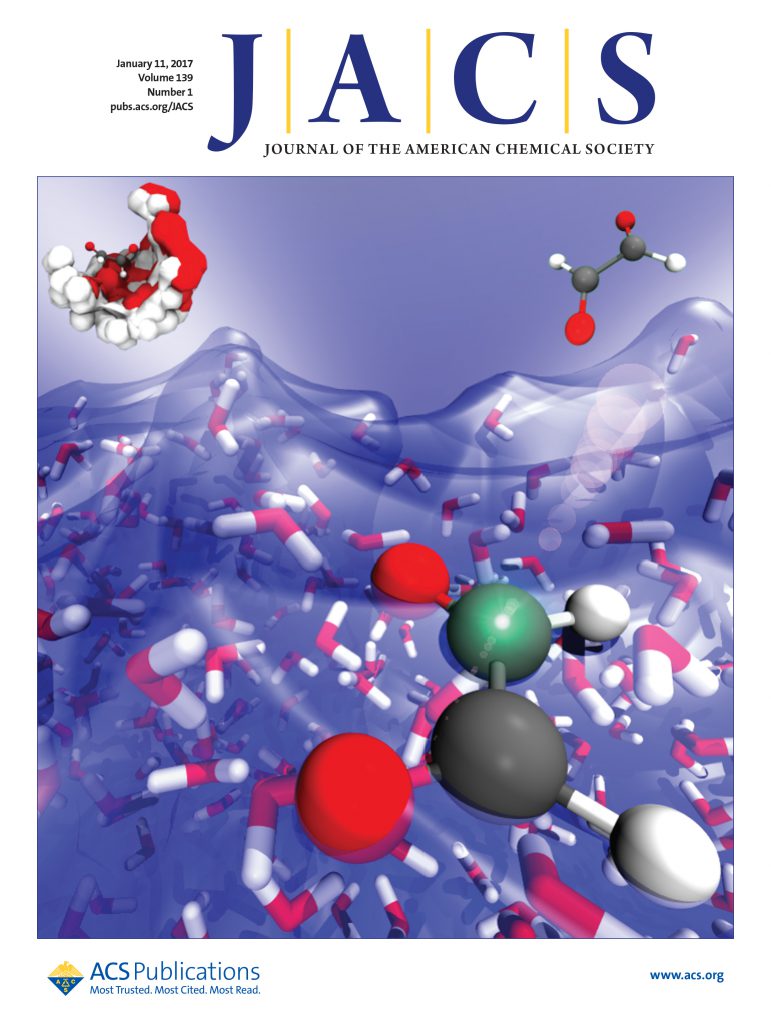生物启发的氯化物辅助蛋白质通道:增强质子传输,从酸性废水中获取可持续能量
IF 15.6
1区 化学
Q1 CHEMISTRY, MULTIDISCIPLINARY
引用次数: 0
摘要
生物过程中高效的质子转移推动了对合成类似物的追求;然而,在自然系统中复制高质子渗透仍然是一个重大挑战。在此,受ClC-ec1蛋白功能的启发,我们在由共价有机框架(COFs)与芳纶纳米纤维(ANFs)组成的杂化膜内设计了Cl -辅助质子传输通道。通过利用缓冲层介导的界面聚合和ANF在水环境中的絮凝行为,我们在COFs和ANF之间建立了强大的氢键相互作用。氢化物材料使Cl -结合,以类似于ClC-ec1蛋白通道的方式显著加速质子运输。当存在少量Cl -离子(质子浓度的0.1%)时,质子的穿透率提高了约3倍,达到9.8 mol m-2 h-2。值得注意的是,该膜有助于酸性废水的可持续渗透发电,输出功率密度为434.8 W m-2。理论计算表明,ANF优先结合Cl -,促进质子跳跃,降低质子输运的能垒。本研究建立了生物离子辅助质子传输的新范例,提出了一种从酸性废水中可持续收集能量的方法。本文章由计算机程序翻译,如有差异,请以英文原文为准。

Bioinspired Chloride-Assisted Protein Channels: Enhancing Proton Transport for Sustainable Energy Harvesting from Acidic Wastewater
Highly efficient proton transfer in biological processes has driven the pursuit of synthetic analogs; however, replicating high proton permeance in natural systems remains a significant challenge. Herein, inspired by the function of the ClC-ec1 protein, we report the design of Cl–-assisted proton transport channels within a hybrid membrane composed of covalent organic frameworks (COFs) integrated with aramid nanofibers (ANFs). By leveraging buffer layer-mediated interfacial polymerization and the flocculation behavior of ANF in aqueous environments, we establish robust hydrogen-bonding interactions between COFs and ANFs. The hydride material enables Cl– binding, significantly accelerating proton transport in a manner similar to that of the ClC-ec1 protein channel. In the presence of a small concentration of Cl– ions (0.1% of the proton concentration), the proton permeation rate is enhanced approximately by 3 times, reaching 9.8 mol m–2 h–2. Notably, the membrane facilitates sustainable osmotic power generation from acidic wastewater, delivering an output power density of 434.8 W m–2. Theoretical calculations revealed that ANF preferentially binds Cl–, promoting proton hopping and lowering the energy barrier for proton transport. This study establishes a new paradigm for bioinspired ion-assisted proton transport, presenting an approach for sustainable energy harvesting from acidic wastewater.
求助全文
通过发布文献求助,成功后即可免费获取论文全文。
去求助
来源期刊
CiteScore
24.40
自引率
6.00%
发文量
2398
审稿时长
1.6 months
期刊介绍:
The flagship journal of the American Chemical Society, known as the Journal of the American Chemical Society (JACS), has been a prestigious publication since its establishment in 1879. It holds a preeminent position in the field of chemistry and related interdisciplinary sciences. JACS is committed to disseminating cutting-edge research papers, covering a wide range of topics, and encompasses approximately 19,000 pages of Articles, Communications, and Perspectives annually. With a weekly publication frequency, JACS plays a vital role in advancing the field of chemistry by providing essential research.

 求助内容:
求助内容: 应助结果提醒方式:
应助结果提醒方式:


